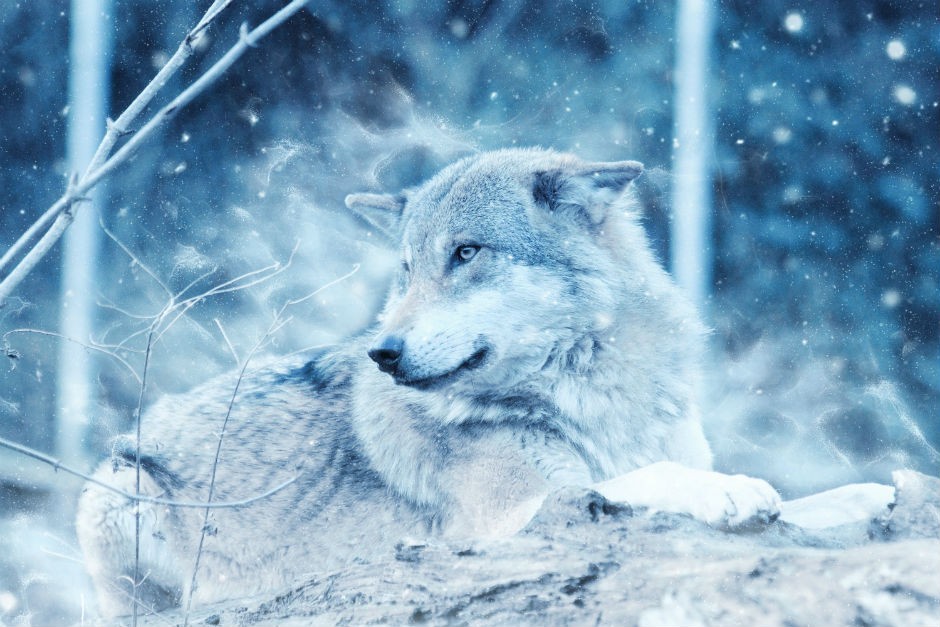Seyed Mohammad Mirjalili is a PhD candidate in Electrical and Electronics Engineering at Concordia. He received his Bachelor and Master's degrees in Electrical Engineering from Shahid Beheshti University in Tehran, Iran. Seyed Mohammad is internationally recognized for his contributions to the fields of Evolutionary Algorithms and Photonics. He has published 29 journal articles with over 3000 citations in total, with an H-index of 15 from Google Scholar Metrics.
Blog post
How gray wolves’ social behaviour and hunting strategy can inspire solutions to real-world engineering problems

You may often hear that your friends use a genetic algorithm or other similar nature-inspired optimization techniques in their research work. Interestingly, different fields of study use the same approach to solve their problems. When a mechanical engineer wants to design the wings of an airplane, for instance, there are many parametres that should be identified and used to create the shape of the wings.
These parametres create an indefinite search space, in which we have to find the best combination of values — the best solution. In the case of an aircraft wing design, we can find values for the parametres to find shapes with maximum lift for the take-off and maximum draft for the landing.
The same steps should be taken when solving any real-world problem — identifying the parametres relevant to the problem and finding a set of values for the parametres in an effort to determine the problem’s solution. Optimal problem-solving can be considered as a way to find the best solution.
As humans, we also constantly use a wide range of search problems in our daily lives. When you go to a shopping centre to buy something, you start to search for different shops and compare different brands to find the best trade-offs between quality and price. This process helps you find your optimal product or service.
The best problem solver in the world
The question that people always ask is: ‘Who is the best and oldest problem solver or what is the finest search technique in the world?’ If you think about it, you should agree with me that nature is the oldest problem solver. The theory of evolution has proved that Mother Nature constantly assists biological organisms in adapting to different environments and cope with the challenges.
According to Charles Darwin, the scientist who developed and presented the theory of evolution in 1859, the main evolutionary operators are selection, crossover and mutation.
There are also relationships between similar or different biological organisms in nature, which are very complicated. Such relationships are divided into five classes, as follows:
- Naturalism — two species live in an ecosystem with no particular effect on each other. For instance, cows, rats, and mice might forage on vegetation in a certain area.
- Predation — one species perished to feed the other one. Wolves and rabbits are good examples.
- Parasitism — one species harms the other, but doesn’t necessarily kill it. Some examples are worms and fleas for mammals.
- Competition — the same or different species compete on resources. Neither is killed here, but the territory is defined. A territory defined by a lion pride is a good example.
- Mutualism — two species establish a mutually beneficial relationship. An example is fish and coral in the ocean. Corals provide shelter and food for fish in exchange for protection and neutrinos from their waste.
These relationships mainly for increase the chance of survival. Even in the same species, cooperation is often seen in nature for the same purpose. For instance, one fish might not be able to run away from predators alone, but in a group, they can inform each other about incoming dangers.
In the field of evolutionary computation, such behaviors are simulated as optimization algorithms to solve real-world problems via computers. Usually, researchers use a trial and error process or rely on their experience to solve problems. This process is tedious, time-consuming and error-prone. Instead, the use of nature-inspired optimization algorithms facilitates the problem-solving process.
Grey Wolf Optimizer
One of the most recent and widely used nature-inspired optimization algorithms is the Grey Wolf Optimizer (GWO)1. We proposed this algorithm in 2014, in which the social intelligence and cooperation of gray wolves in hunting are simulated to solve real-world problems.
As a general purpose and black-box optimizer, this algorithm first considers the search space of your problem as a high-dimensional landscape. Then, it employs artificial gray wolves to search and find the best solution in that problem landscape.
As of August 2019, the GWO algorithm has been cited more than 2,000 times and employed to solve a wide range of problems in diverse fields. I am very proud of this algorithm and believe that it will add value to the rest of the world for many years.
Nature continues to help
The area of nature-inspired optimization is accelerating every year. Since these algorithms consider problems as a black-box and cope with a large number of locally optimal solutions, a lot of researchers use them to solve optimization problems where classical search and optimization methods fail or suffer from trapping in locally optimal solutions.
In the end, I would like to thank Seyedali Mirjalili for giving me some advice to write this blog. He is an associate professor of Computer Science and internationally recognized for his advances in the area of nature-inspired optimization.
References
1. S. Mirjalili, S. M. Mirjalili, and A. Lewis, “Grey Wolf Optimizer,” Adv. Eng. Softw., vol. 69, pp. 46–61, Mar. 2014.
About the author


